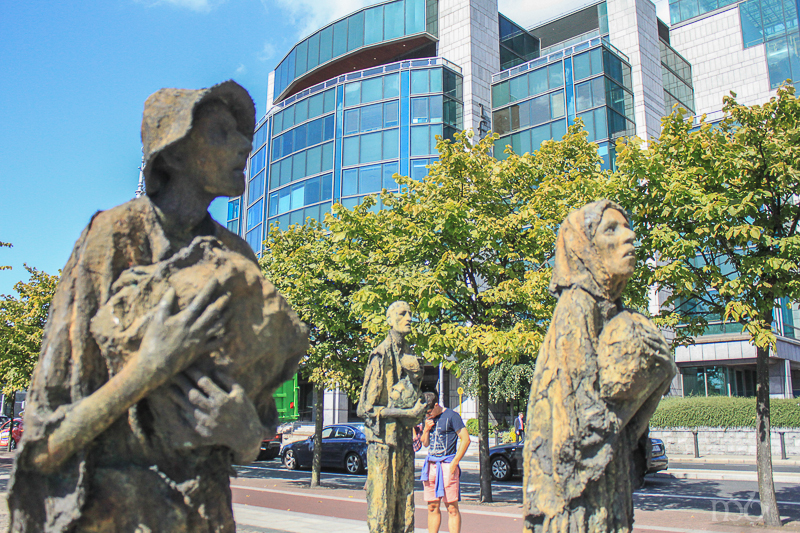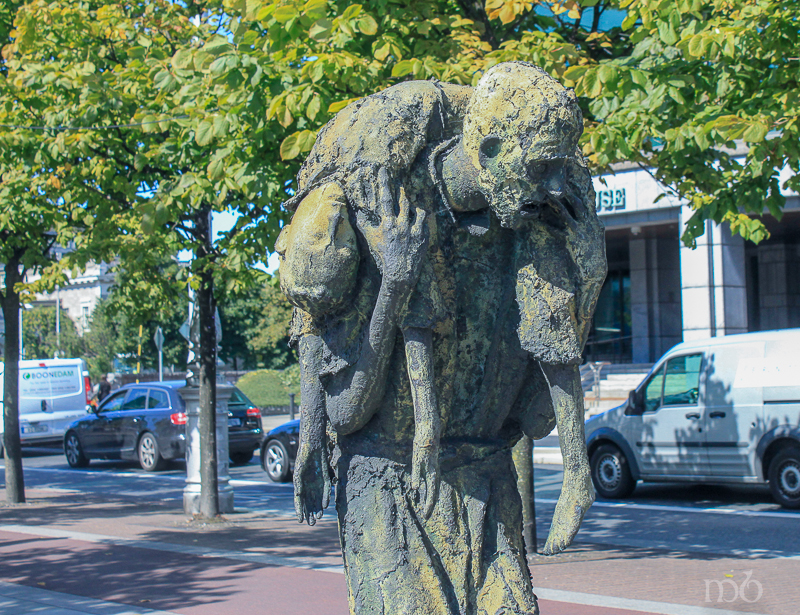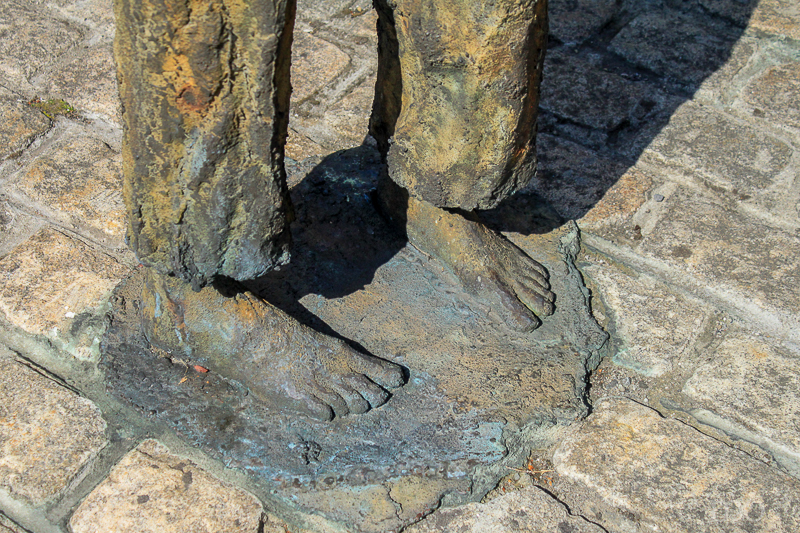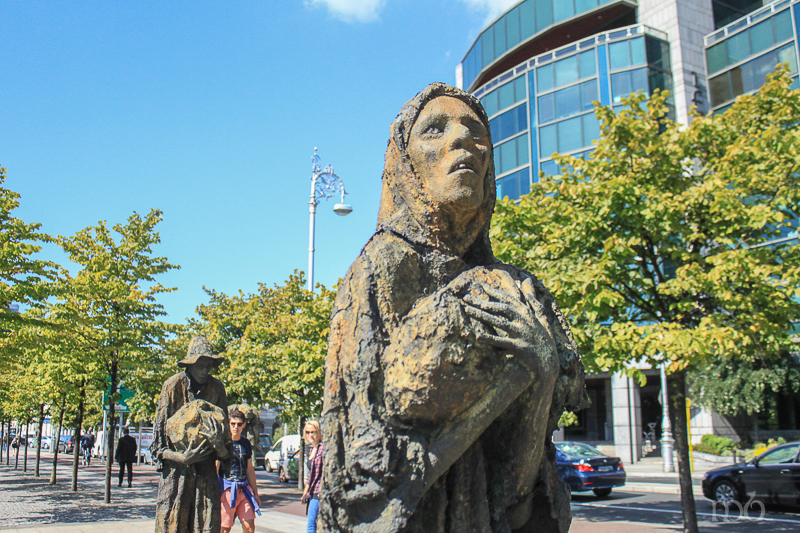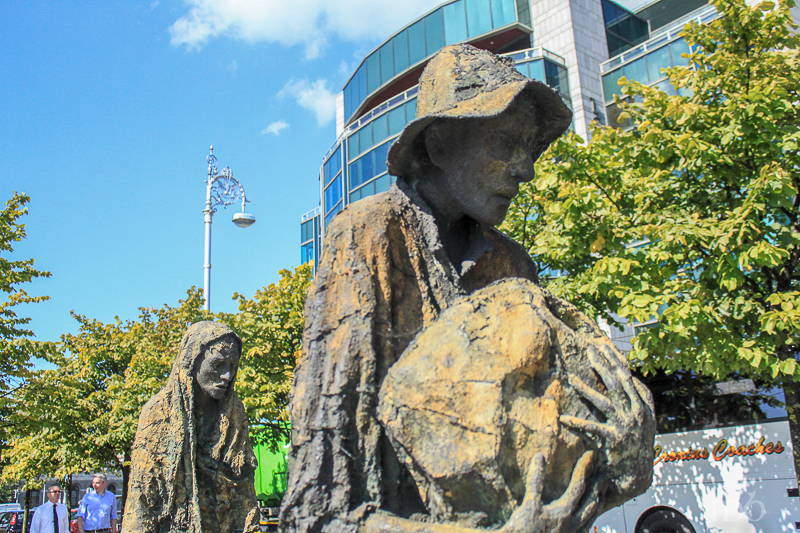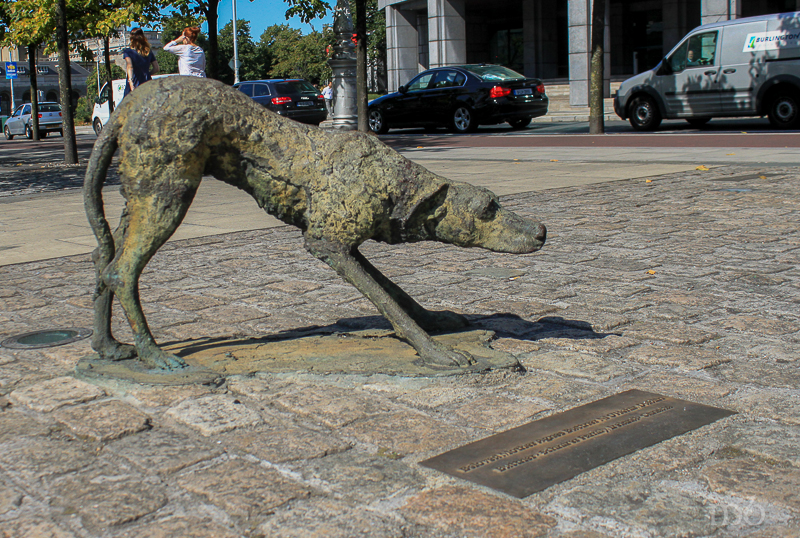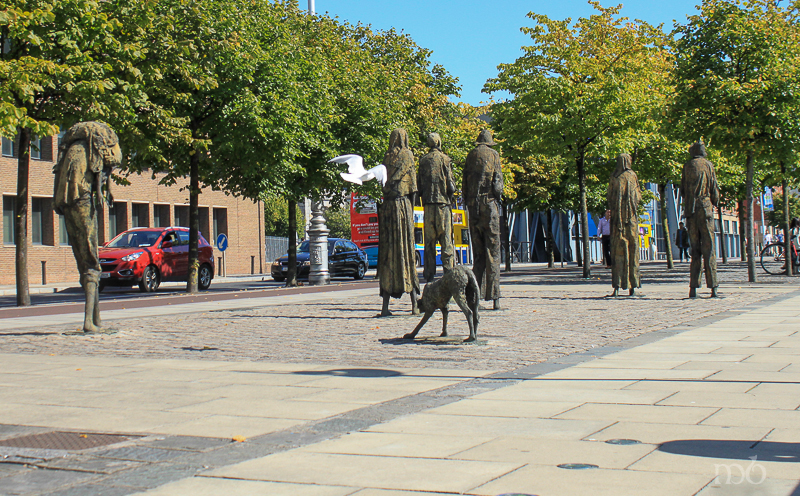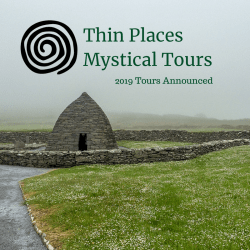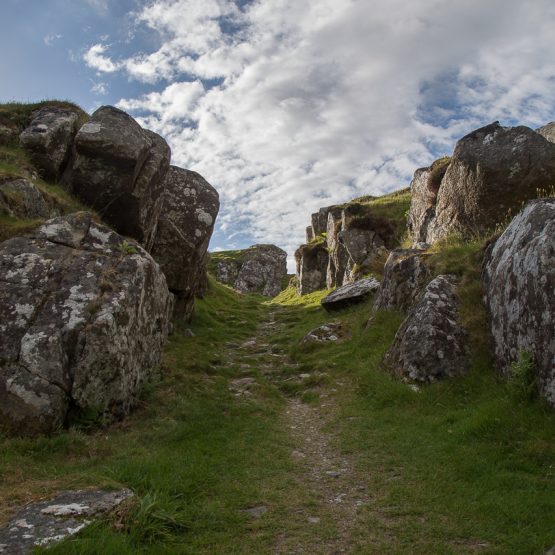Famine Memorial in Dublin – Walking in Two Worlds
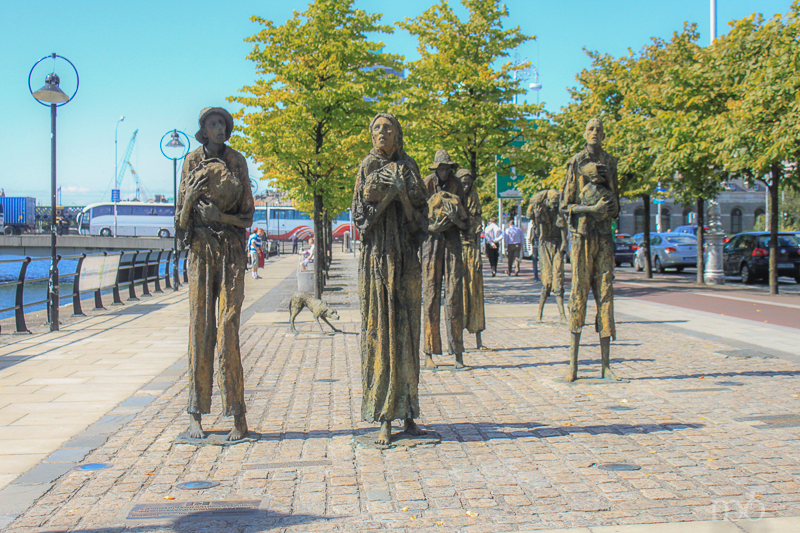 Of all the Famine Memorials I’ve seen in Ireland, the one in Custom House Quay in Dublin’s Docklands is the most moving. Life-size sculptures of gaunt, listless peasants stand almost as if in slow motion … wandering down the quay.
Of all the Famine Memorials I’ve seen in Ireland, the one in Custom House Quay in Dublin’s Docklands is the most moving. Life-size sculptures of gaunt, listless peasants stand almost as if in slow motion … wandering down the quay.
If ever there was a depiction of “walking in two worlds” it here.
One world reflects the current pulse of Dublin. Business people, tourists, and cyclists move along this path on the north side of the River Liffey at a quick pace. Their intent is focused. Even those sitting on benches are texting, or chatting on the phone, or reading. Few take notice the bronze faces and bodies – frozen in place.
The Other world is the world of the famine walkers. The world of 1845 when Great Hunger began. The walkers move quietly through the chaos of busy Dublin, slowly and deliberately. They plead for help, for food, for shelter from those who have plenty, but are are turned away or ignored…. treat like bothersome pests.
They begged the world to notice them then. They beg the world to notice them now.
When the world looked away, they lost their homes, their children died, their families crumbled. They starved.
Now they are a memory that moves through the veil of time onto Custom House Quay so that we who have much, might be moved.
One of the first Famine voyages carrying the starving Irish to new lives in America left from the this place. The ship was named Perseverance. It sailed on St. Patrick’s Day in 1846 and landed in New York two months later.
The bronze figures were designed and crafted by Dublin sculptor Rowan Gillespie, and they were presented to to the City of Dublin in 1997.
Our guests on Thin Places tours in 2014 will visit this Memorial and a few others in Dublin.
Skibbereen Famine Cemetery – a thin place
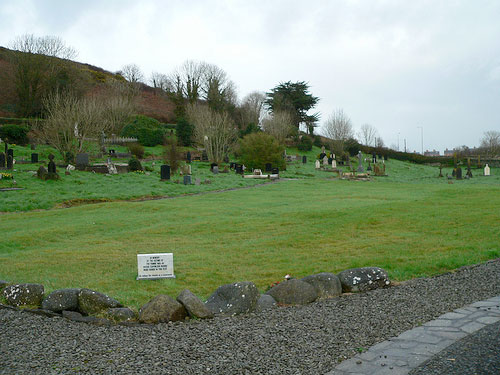 Abbeystrewery Cemetery in Skibbereen. 8000 – 10,000 victims of the Great Hunger are buried here.
Abbeystrewery Cemetery in Skibbereen. 8000 – 10,000 victims of the Great Hunger are buried here.
Skibbereen was a hub of commerce in southern Ireland during the nineteenth century, with the River Ilen flowing through the town ending at the Baltimore Harbour near the Atlantic Ocean. But Skibbereen is perhaps most famous for its association with the Great Famine that hit Ireland hardest in 1846-47. The song Skibbereenwith a haunting melody and lyrics that tell of a father recounting to his son the cruel reason why he left his beloved homeland “old Skibbereen,” – he lost the farm, the house, and he lost his wife to hunger when the boy was but 2 years old. So the father fled with the young son wrapped in his coat – never to return for fear of being imprisoned for the debt he owned in taxes and rent. County Cork was one of the areas in Ireland that lost over one third of its population to the Famine in those years.
History states that the Famine occurred because of a failure in the potato crop in Ireland. The Irish were under British occupation at the time. Rich landlords controlled the country, though they were a small portion of the population. Most of the population served as tenants to these landlords, and suffered from high rents and taxes. Poverty ran deep in the tenant class, which used the potato as the main staple of its diet. When the crop failed, panic set in. The Irish sold what they had, including boats and fishing equipment to feed their suffering families. One in three people died in the area surrounding Skibbereen. Most concur that there was plenty of food in Ireland – plenty enough to feed the starving citizens. But the food was exported for profit that was made by the British government and the Anglo Irish ruling class.
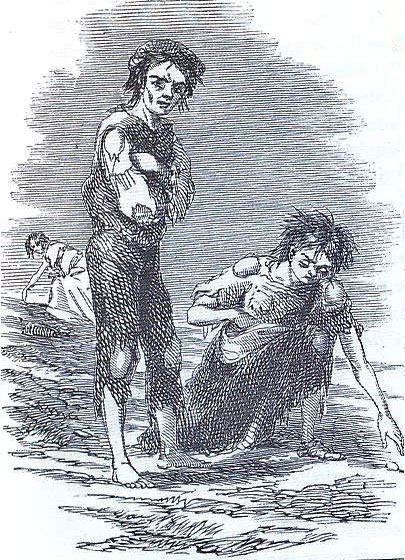 Sketch by illustrator James Mahony entitled – Skibbereen 1847 – Mahony produced this for a London newspaper in the same year
Sketch by illustrator James Mahony entitled – Skibbereen 1847 – Mahony produced this for a London newspaper in the same year
People were dying so fast in Skibbereen that there weren’t enough people alive to take care of the task of burying the dead. So a mass grave was dug near the ruins of the old Abbeystrewery Franciscan friary. It is estimated that 8,000 to 10,000 nameless, coffinless, unremembered dead were dumped into the mass grave. Today the lumpy plot of ground has green grass covering the burial site and a stone marker that says:
In Memory of the Victims of the Famine 1845-48
Whose Coffinless Bodies were Buried in this Plot
There is a commemorative Famine trail that begins at the town center and includes the Skibbereen Heritage Centre and the Abbeystrewery Cemetery (pictured above). The artistic renderings of stone cutters and poets that dapple the cemetery grounds with tokens of remembrance are worth a trip to Skibbereen. So much sorrow here. One can’t helped but be moved.
Skibbereen is a thin place. And it is a stop on our Thin Places Tour in September 2010.
